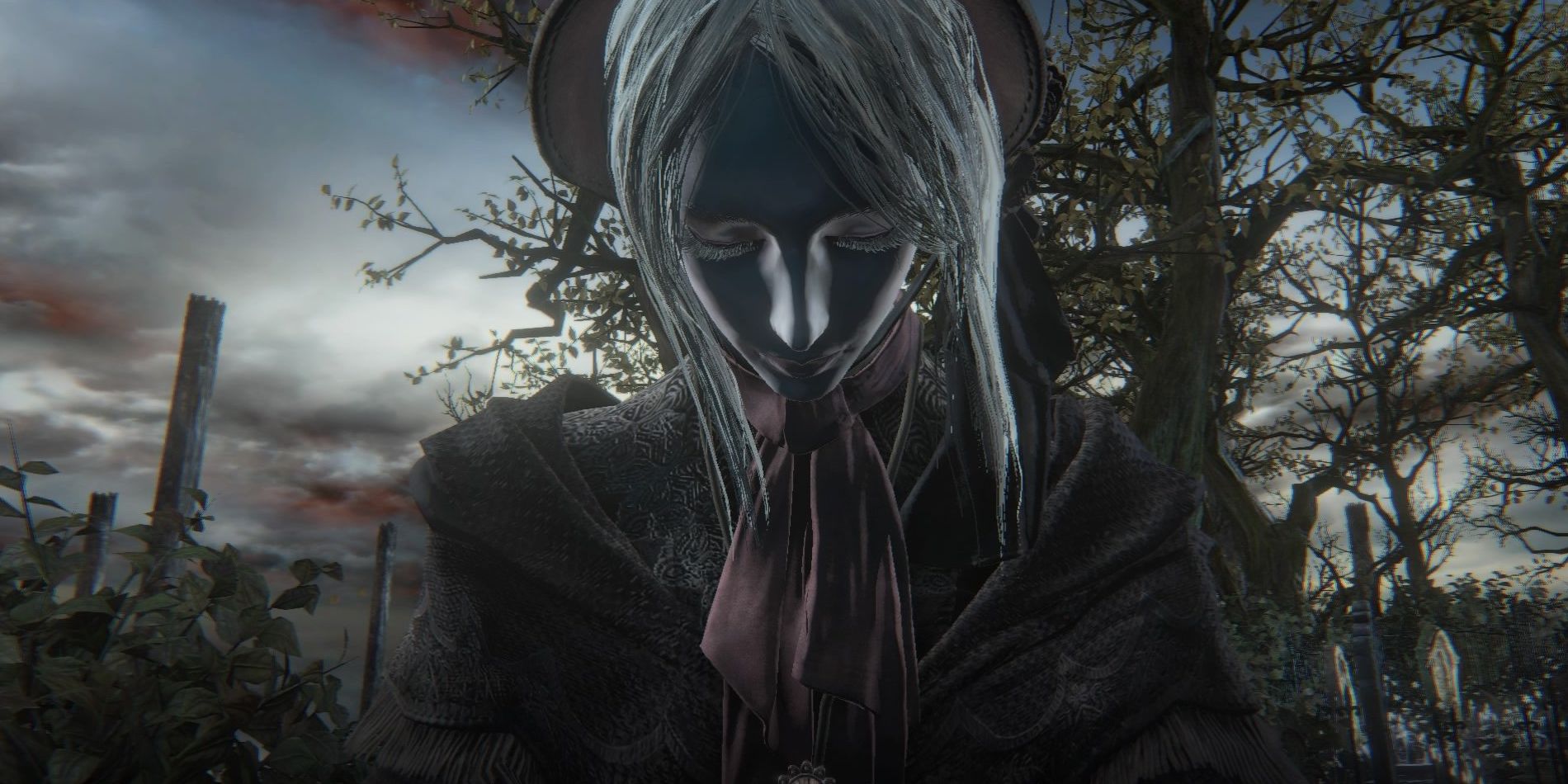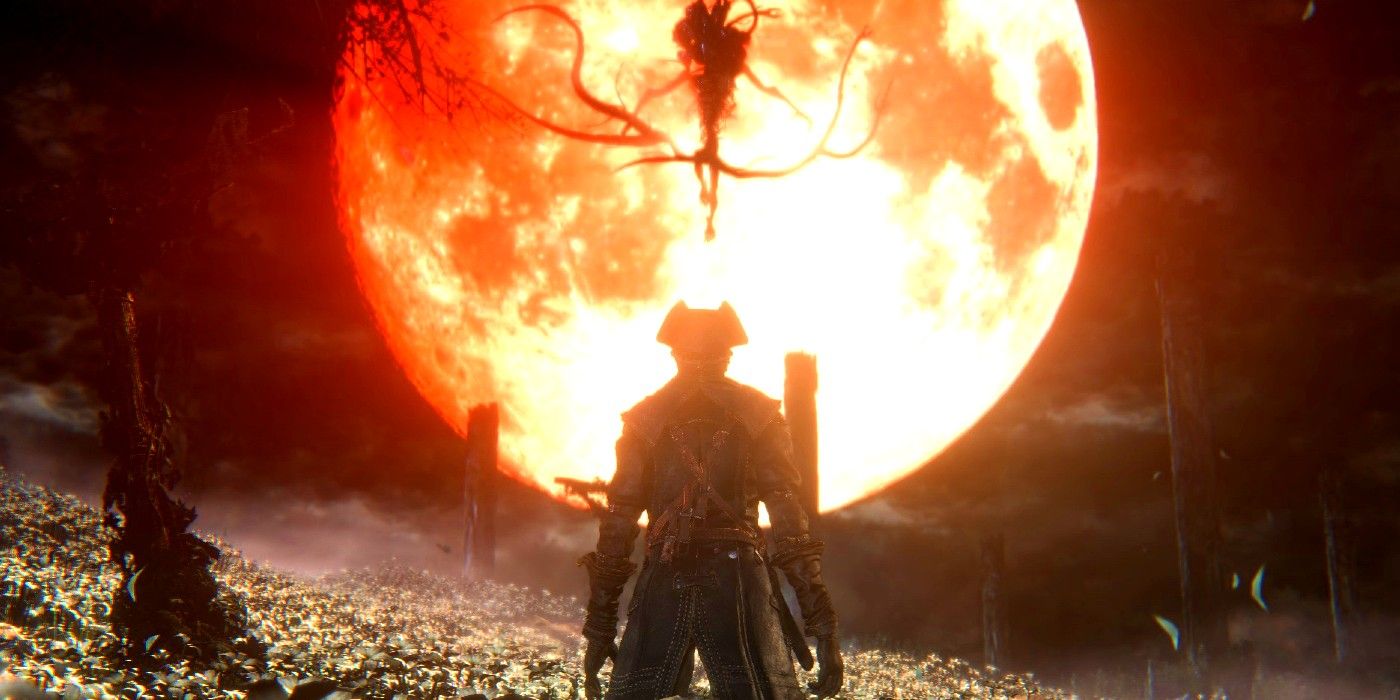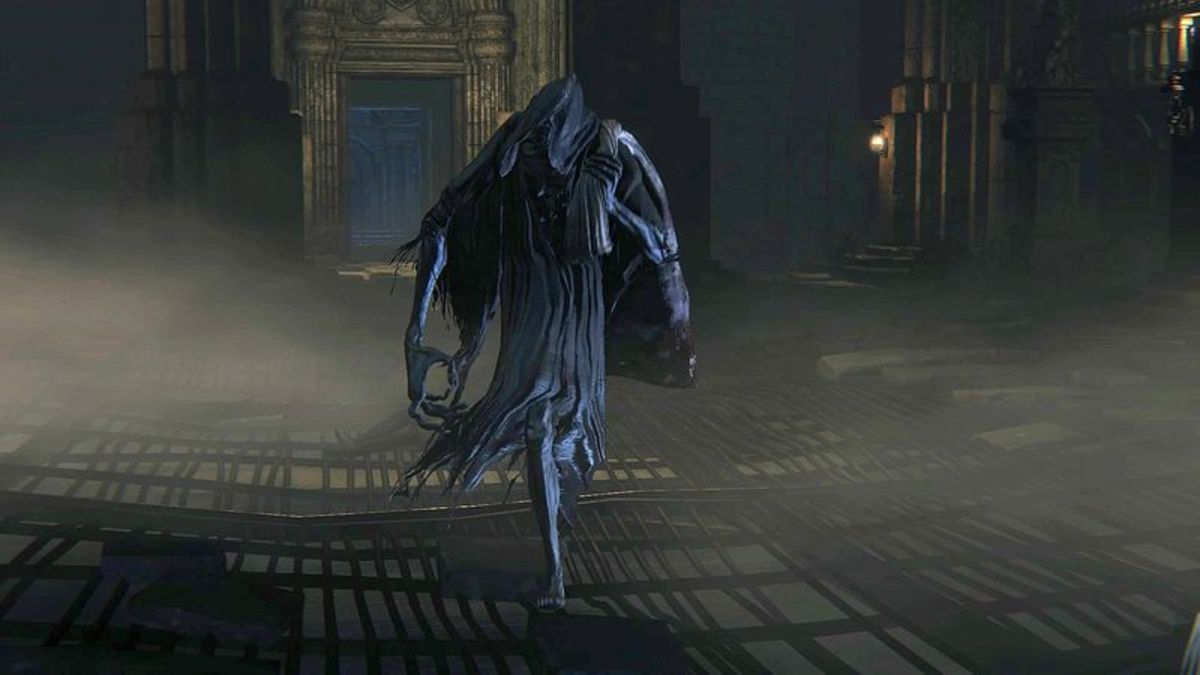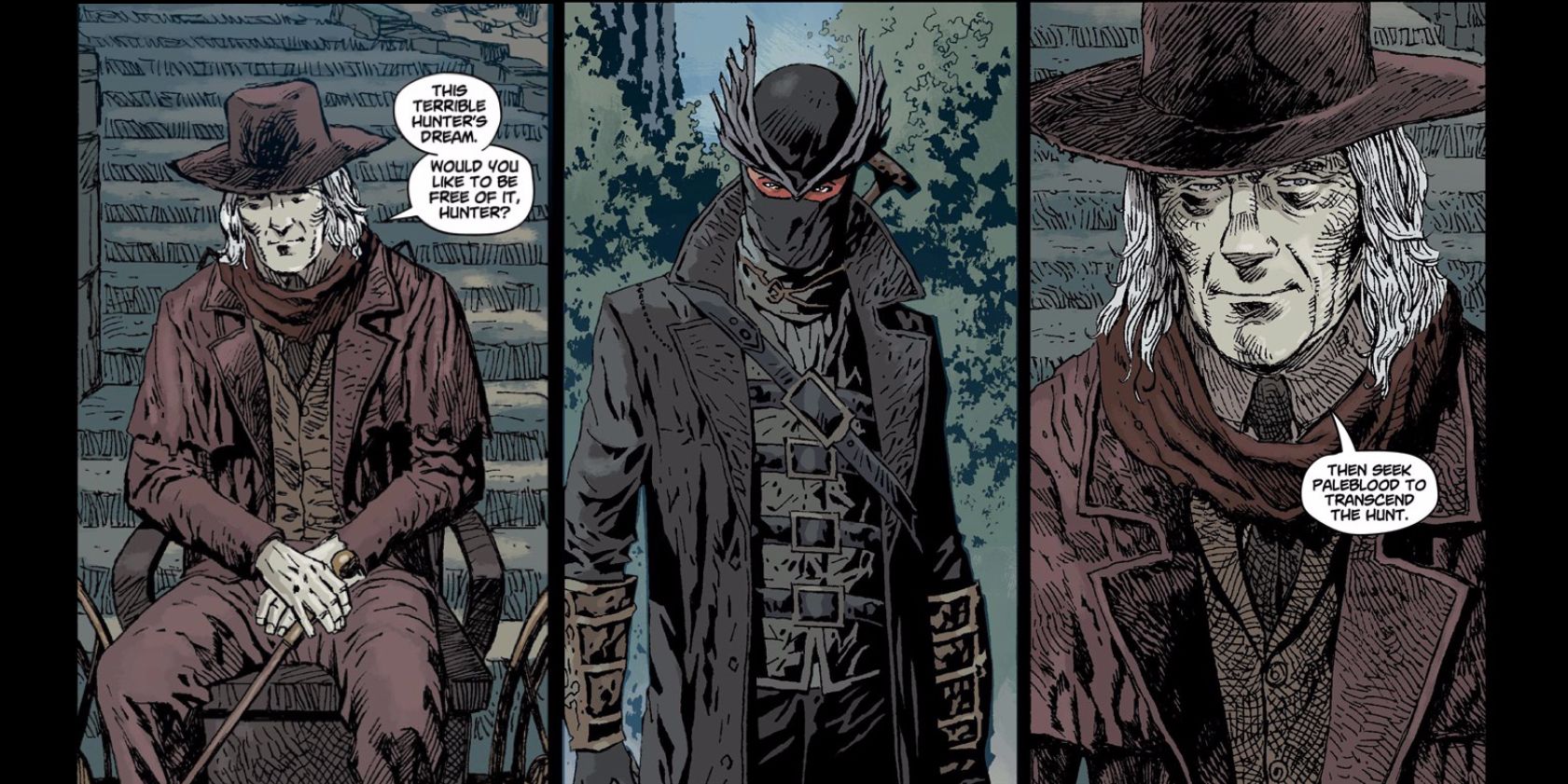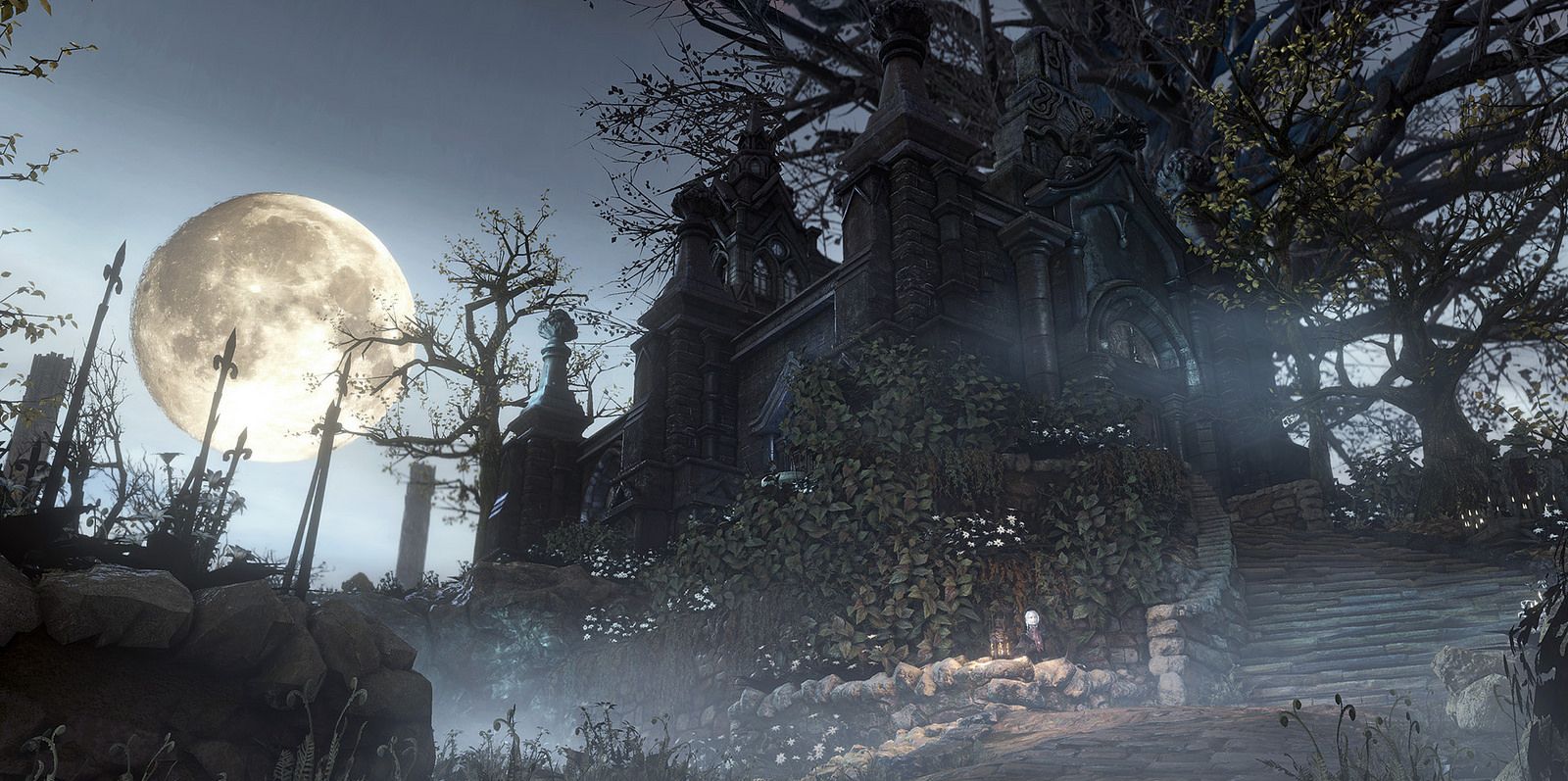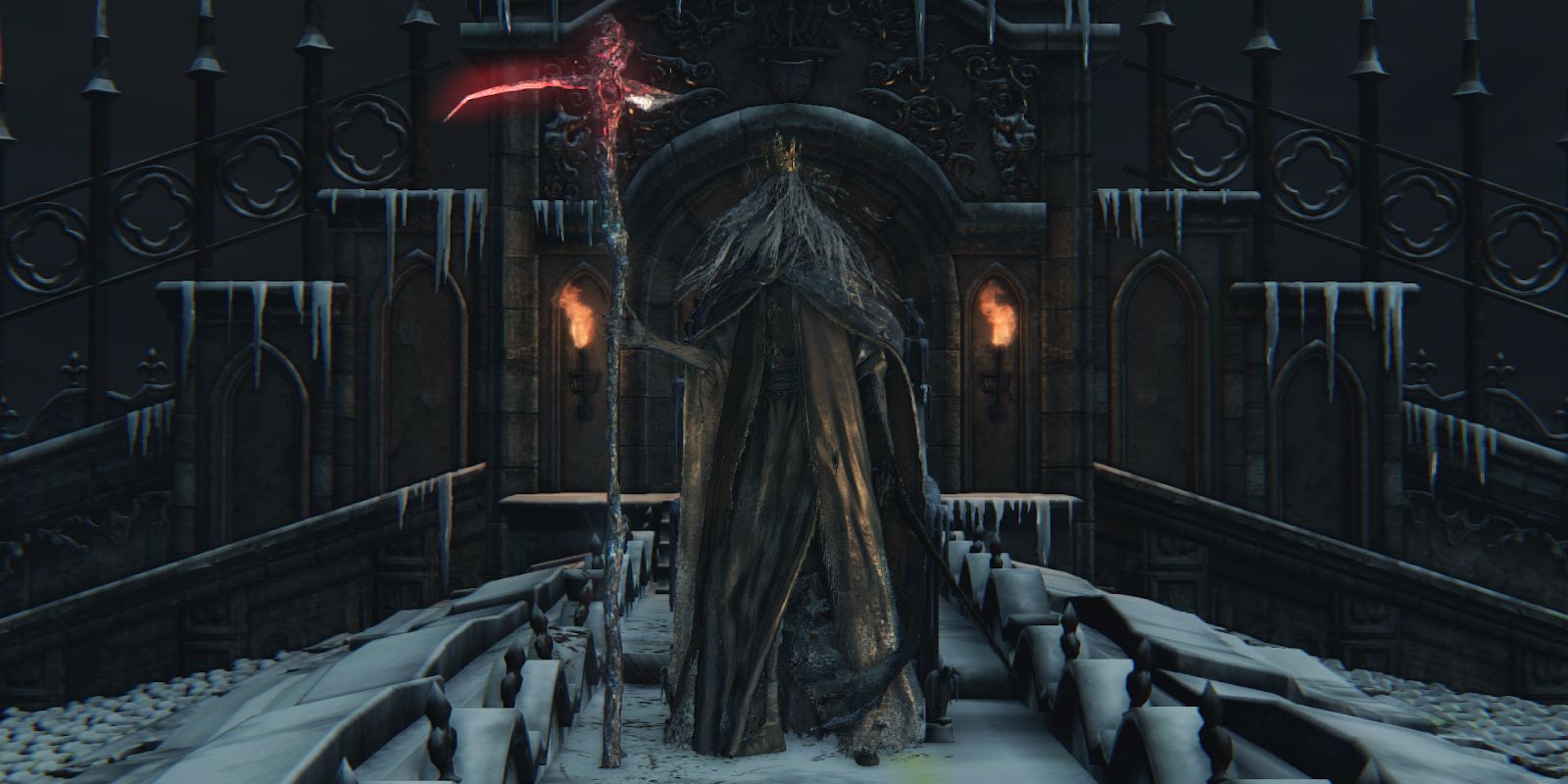FromSoftware games are known for their mysterious lore and sparse storytelling. From the soon-to-be-remade Demon’s Souls to 2019’s Sekiro: Shadows Die Twice, the studio’s games have cultivated their own subgenre of action RPG, the Soulslike. Inspired by FromSoftware President Hidetaka Miyazaki's childhood, in which he used to fill in the parts of English stories he could not yet translate using his own imagination, Soulslike games force players to rely on item descriptions, cryptic dialogue exchanges, and their own interpretations to make sense of the game’s complex narrative. Though it marked a departure from Souls in setting and source material, the studio’s 2015 release Bloodborne is no exception.
Bloodborne follows a nameless character as they forced to hunt the monsters of Yharnam, a Victorian Gothic city plagued by a scourge of beasts. In proper Soulslike fashion, the player slowly pieces together the story behind Yharnam's scourge using a combination of subtle clues, enigmatic item descriptions, and their own imaginations. As the player begins to unravel the city’s mysteries and close in on the source of the plague, they are driven by a simple, singular goal: seek Paleblood.
In the original Bloodborne game, Paleblood borders on that status of MacGuffin: an object or device present in a story for the sole purpose of propelling the plot. But where a true MacGuffin is devoid of further meaning, Bloodborne’s Paleblood is a substance with many possible definitions, each with its own unique ramifications for the lore and story. In the years since Bloodborne’s release, related media, the player community, and even the Game Director himself have offered their own interpretations of Paleblood, enabling players to make up their own minds about what Paleblood is and, ultimately, its role in the events of Bloodborne.
Paleblood in the Bloodborne Game
Paleblood is mentioned a total of five times in Bloodborne. The first is in the opening cinematic, before the player has even completed their character creation. The Blood Minister mentions it as he prepares the player for their first blood transfusion.
Oh, yes... Paleblood... Well, you've come to the right place. Yharnam is the home of blood ministration. You need only unravel its mystery.
The next reference is immediately after the game officially begins, when the player character awakens in Iosefka’s clinic. Now a hunter, they find a handwritten note with the instruction: “Seek Paleblood to transcend the hunt.” Thus, the player’s goal is established: in order to escape the nightmare forced upon them, in which they must hunt beasts in a seemingly endless night, the player must find the substance known as Paleblood.
Moments after taking their first steps in Central Yharnam, the player comes upon one of the game’s few friendly NPCs, a man named Gilbert who speaks to the player from behind a barred window. The silent player character appears to ask Gilbert what he knows of Paleblood to which he responds: nothing. Gilbert then directs the player to the Healing Church, explaining that the organization is the controlling body behind blood ministration. And with that, the player receives their first objective, thus setting the events of Bloodborne in motion.
After that initial encounter with Gilbert, the concept of Paleblood disappears entirely from Bloodborne until the final act of the game. Once the player defeats Rom and gains access to the Unseen Village, uncovering the macabre Mensis Ritual, they come upon a note that simply reads: “Behold! A Paleblood Sky!” The final reference to Paleblood awaits players in the Lecture Hall they warp to after escaping the Unseen Village. Perhaps the most confusing of all the game’s Paleblood references, the Lecture Hall note reads: “The nameless moon presence beckoned by Laurence and his associates. Paleblood.”
After the Lecture Hall, the concept of Paleblood disappears from Bloodborne once again. No matter which of Bloodborne’s three possible endings the player chooses, the substance is never mentioned again, and appears to have no bearing on the ultimate outcome of the story. Players are left to make up their own minds about what Paleblood is, and whether or not the player character found it at all.
In an interview for Future Press’ official Bloodborne strategy guide, Game Director Hidetaka Miyazaki attempted to shed some light on the subject.
I think there are two different ways you could interpret “paleblood” here. One is the color of the sky after you defeat the Vacuous Spider and the Mensis secret ritual is revealed. The sky there is a very pale blue, like a body drained of blood. I think there's also a message placed in Yahar'gul, Unseen Village that calls back to that. This is before the ritual is revealed, so when you're kidnapped and go to Yahar'gul, you don't know what it could mean yet. Then, after the ritual, you could look at it again and it'll dawn on you… That was my intention, anyway, but I have to admit, that's probably a bit tough to pick up on (laughs). But either way, this leads to the interpretation that ‘seek paleblood’ refers to uncovering that ritual and putting a stop to it.
The other possible intepretation, according to Miyazaki, is that Paleblood is, in fact, the name of one of Bloodborne’s eldritch gods, known in the game as Great Ones.
Right, that's another interpretation. ‘Paleblood’ is another name for the monster that comes from the moon under certain conditions. I think there's another message in the lecture building that hints at this, but I don't want to go into too much more detail here.
Miyazaki closes this portion of the interview by stating that the concept of Paleblood and its bearing on Bloodborne’s story is “someplace where I want to leave room open for the imagination – both my own and the imaginations of gamers.” Thus, the mastermind behind Bloodborne’s eldritch truth actively encourages players to create their own interpretations of the story, similar to the way he did with the books he read growing up.
Paleblood in the Bloodborne Comics
In 2018, independent publisher Titan Comics began publishing graphic novel adaptations of Bloodborne. The series is now up to sixteen issues, exploring both original stories and those of characters present in the game. The concept of Paleblood also appears in the Titan comics, beginning with the very first issue, The Death of Sleep.
The issue begins in Old Yharnam, where an androgynous hunter attempts to make sense of the nightmarish world around them. A fellow hunter, Djura, who Bloodborne fans will recognize from the Old Yharnam level in the video game, offers them shelter. Djura then introduces the hunter to a sickly child, who strongly resembles the Celestial Emissaries, or Kin, present in the game.
Djura claims the child is what the hunter seeks. When the hunter protests, Djura remarks, “You are seeking Paleblood to transcend the hunt, are you not?” He turns to the child and instructs them to show the hunter something. The child silently cuts into their flesh with a pointed fingernail, causing them to bleed a pale substance.
The hunter resolves that this must be Paleblood, and resolves to escape Yharnam with the child. They bid farewell to other recognizable game characters like Gehrman and Iosefka, and begin their journey to the Fishing Hamlet. Along their travels, the hunter ponders the other possible definitions of Paleblood, including Miyazaki’s interpretations of the color of the sky and the name of the Moon Presence. All the while, the child grows increasingly monstrous, gaining the ability to see the Amygdala and even control certain beasts.
Due to the child’s strong resemblance to the game’s Celestial Emissaries and unexplained powers, it would appear that Paleblood, in the Bloodborne comics, simply refers to the blood of the Kin. Indeed, eagle-eyed players in the Bloodborne community have repeatedly noted that Kin enemies in the game do not bleed red, but rather pale amber. However, a final twist in the fourth issue of The Death of Sleep throws a wrench into this all-too-easy interpretation.
As the hunter and the child finally reach the Fishing Hamlet, the child points to a note inexplicably addressed to the hunter. Gehrman, the custodian of the Hunter’s Dream who is trapped in its otherworldly realm, somehow wrote and left the note for the hunter to find. In it, he tells them simply, “You will never know the true nature of Paleblood”, casting doubt on the hunter’s belief that the term refers to the child. Frustrated, the hunter crumples the note, leaving the true meaning of Paleblood – and, ultimately, the hunter and child’s fates – open to interpretation.
Paleblood in the Bloodborne Community
With Miyazaki’s express encouragement and the definitions offered by both the games and comics open to interpretation, Bloodborne’s player community has posited multiple possible meanings of the mysterious Paleblood. The Bloodborne subreddit is rife with different theories and interpretations, each with their own unique ramifications for the lore and story. However, one fan theory has risen to such popularity that it is actually regarded as canon by many in the Bloodborne community.
In 2015, just months after the game’s original release, a fan by the alias Redgrave posted The Paleblood Hunt, a 100-page analysis of the world, characters, and events of Bloodborne. Though every player does not universally accept the essay as gospel, the work is well known within the Bloodborne community, and continues to be a topic of analysis and debate even today.
The Paleblood Hunt proposes that there are four main types of blood in Bloodborne: the Old Blood, or blood of the Great Ones; regular human blood; serum; and Paleblood. Redgrave hypothesizes that all humans have the capacity for beasthood, and that when their blood is tainted with that of the Great Ones, supposedly a cure for all human ailments, the eldritch nature of the Old Blood corrupts their humanity and ultimately brings about beasthood. According to Redgrave, this is why the beasts of Yharnam, who were all once human, bleed red.
Serum, on the other hand, is Redgrave’s term for the amber blood of the Kin. As they write in The Paleblood Hunt: “Serum is not blood of the Great Ones, but rather blood of the Kin of the Cosmos, those who were once mortal but ascended to becoming Kin of the Great Ones.” Serum is, in fact, the medical term for blood absent of red and white blood cells and the proteins responsible for coagulation. And, as in Bloodborne, real world serum is pale yellow in color. According to Redgrave: “The Kin of the Cosmos have cleansed their blood of the tainted scourge, separating it from the other ingredients and becoming pure beings.”
That leaves the question of Paleblood. According to Redgrave, Paleblood, like serum, has a real world equivalent: iron deficiency anemia. Anemia is caused by a lack of healthy red blood cells, and, especially in the Victorian era, could cause sufferers to become tired, sickly, and pale. Redgrave asserts that it is this very lack of red blood cells that causes anemic hunters to resist madness and the beastly effects of the Old Blood, shaping them into a special warrior uniquely equipped to halt the scourge and challenge the Moon Presence: a Paleblood hunter.
Though The Paleblood Hunt is ultimately conjecture, there is much evidence in the game to support Redgrave’s theory. The only canonized backstory for the player character is that they came to Yharnam seeking a cure for an unknown ailment, which, especially in Bloodborne’s Victorian setting, could very well be anemia. The theory is further bolstered by the Doll’s reference to the hunter’s “sickly spirit,” and the various real world equivalents Redgrave cites in the essay. These strong supporting arguments and detailed analyses of both real world and in-game evidence have led many to regard The Paleblood Hunt as canon, making its theories one of the most popular interpretations of Paleblood in the entire Bloodborne community.
Ultimately, the exact meaning of Paleblood remains unknown. Just as the young Miyazaki grew up creating his own narratives to make sense of the portions of English books he could not yet understand, so the Bloodborne creator encourages players to draw their own conclusions about the nature and ramifications of Paleblood. Whether they subscribe to the interpretations offered by the game, the comics, the community, or choose to develop their own theories, Bloodborne players are inextricably tied to the game’s narrative by virtue of their own imaginations. However, those who have survived the night and slain the nightmare should know to proceed with caution, lest they come too close to uncovering the Eldritch Truth.

